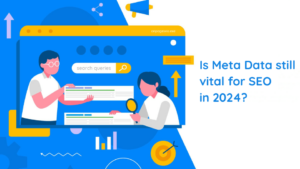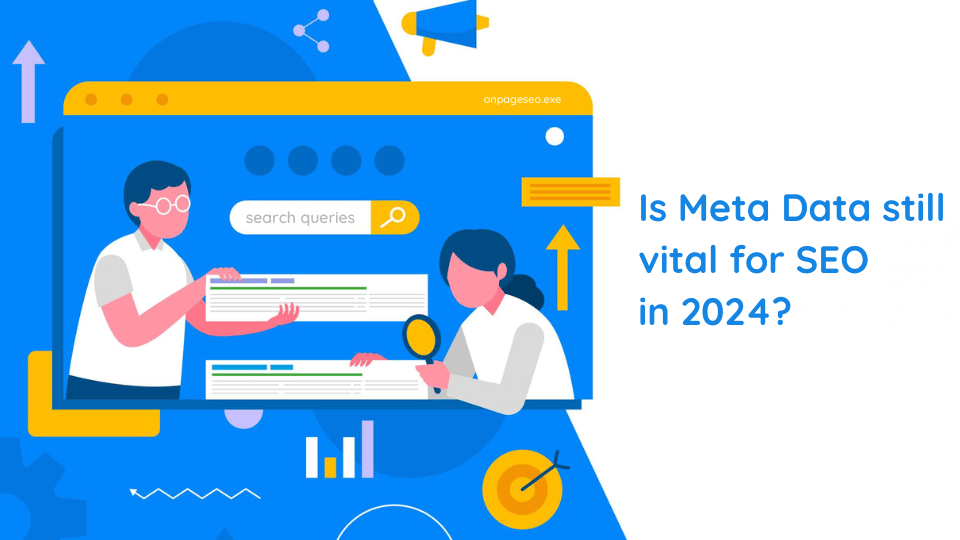Important HTML Meta Tags
In the ever-evolving world of search engine optimization (SEO), meta tags have long been hailed as crucial components for boosting website visibility and ranking. Despite the ever-changing algorithms of search engines, the importance of meta tags remains steadfast. In 2024, leveraging the power of meta tags is not only vital for enhancing search engine rankings but also for influencing user behavior and driving engagement. Let’s delve into the realm of meta tags and explore their significance in the digital landscape.

Meta Title Tags: The Gateway to Your Content
The meta title tag serves as the headline of your web page in search engine results pages (SERPs). Think of it as the first impression your page makes on potential visitors. Crafting compelling and relevant meta titles is essential for capturing the attention of users and enticing them to click through to your website.
Title tag:
“`html
<title>Unlocking the Secrets of Meta Tags: A Guide to Boosting Your Website’s Visibility</title>
“`
Meta Description Tags: Your Elevator Pitch to Users
The meta description tag provides a brief summary of the content found on your webpage. This snippet appears beneath the meta title in SERPs and plays a crucial role in convincing users to click on your link. Here’s how you can write an engaging meta description:
html
<meta name=”description” content=”Discover the power of meta tags and learn how to optimize them for better search engine rankings and user engagement. Dive into our comprehensive guide today!”>
Image Attribute Tags: Enhancing Accessibility and SEO
Image attribute tags, such as alt text, enable search engines to understand the content of images on your website. Additionally, they improve accessibility for visually impaired users. Incorporating descriptive alt attributes for your images is essential for both SEO and user experience:
html
<img src=”example.jpg” alt=”A person typing on a laptop computer”>
Heading Tags (H1-H6): Structuring Your Content for Clarity
Heading tags are used to organize the hierarchical structure of your webpage content. The H1 tag represents the main heading, while subsequent headings are denoted by H2, H3, and so on. Properly utilizing heading tags not only enhances readability but also signals the importance of different sections to search engines:
html
<h1>Welcome to Our Blog!</h1>
<h2>Discover the Power of Meta Tags</h2>
Noindex, Nofollow Tags: Controlling Search Engine Crawling Behavior
Noindex and nofollow tags are directives that instruct search engine bots on how to crawl and index your webpages. These tags are useful for preventing certain pages from appearing in search results or for controlling the flow of link equity:
html
<meta name=”robots” content=”noindex, nofollow”>
Canonical Tags: Preventing Duplicate Content Issues
Canonical tags are used to specify the preferred version of a webpage when duplicate content exists across multiple URLs. Implementing canonical tags helps consolidate link equity and avoid potential penalties from search engines:
html
<link rel=”canonical” href=”https://www.example.com/page”>
Robots X Tags: Fine-Tuning Indexing and Crawling
Robots X tags provide granular control over how search engine bots interact with specific elements on your webpage. By utilizing directives such as “x-robots-tag,” webmasters can prevent certain resources from being indexed or crawled:
html
<meta name=”robots” content=”x-robots-tag: noindex”>
Social Media Tags: Optimizing Content Sharing on Social Platforms
Social media tags, including Open Graph and Twitter Cards, allow you to control how your content appears when shared on social media platforms. By defining metadata such as titles, descriptions, and images, you can maximize engagement and visibility on social networks:
html
<meta property=”og:title” content=”Unlocking the Secrets of Meta Tags”>
<meta property=”og:description” content=”Discover the power of meta tags and learn how to optimize them for better search engine rankings and user engagement.”>
<meta property=”og:image” content=”https://www.example.com/image.jpg”>
Schema Markups: Enhancing Search Results with Structured Data
Schema markups provide search engines with additional context about the content of your webpages. By implementing structured data markup, you can enhance the appearance of your search results with rich snippets, such as star ratings, reviews, and event details:
html
<script type=”application/ld+json”>
{
“@context”: “https://schema.org”,
“@type”: “BreadcrumbList”,
“itemListElement”: [{
“@type”: “ListItem”,
“position”: 1,
“name”: “Home”,
“item”: “https://www.example.com”
}]
}
</script>
Viewport Tags: Optimizing Display on Mobile Devices
Viewport tags specify how a webpage should be displayed and scaled on various devices, particularly mobile phones and tablets. By defining the viewport meta tag, you ensure that your website maintains a responsive and user-friendly layout across different screen sizes:
html
<meta name=”viewport” content=”width=device-width, initial-scale=1.0″>
The Importance of Meta Tags in Website Optimization
Meta tags play a pivotal role in shaping the online visibility and user experience of your website. By optimizing meta tags, you not only improve your chances of ranking higher in search results but also enhance click-through rates and conversion rates. Here’s why meta tags are essential for any website:
-
Enhanced Search Engine Visibility
Meta tags provide valuable information to search engines, helping them understand the relevance and context of your webpages. By optimizing meta titles and descriptions, you increase the likelihood of your website appearing prominently in search results, driving organic traffic to your site.
-
Improved User Engagement
Compelling meta titles and descriptions serve as virtual advertisements for your webpages, enticing users to click through and explore your content further. By crafting informative and persuasive meta tags, you can captivate the interest of potential visitors and encourage them to engage with your website.
-
Increased Click-Through and Conversion Rates
Meta tags directly influence user behavior in search engine results pages. A well-crafted meta title and description can entice users to click on your link instead of competitors’, leading to higher click-through rates (CTR). Moreover, by aligning meta tags with the intent of your target audience, you can attract qualified leads and facilitate conversions.
Potential Issues and Best Practices
While meta tags offer numerous benefits for website optimization, improper implementation or neglecting them altogether can lead to detrimental consequences. Here are some potential issues to be aware of:
-
Duplicate or Thin Content
Failing to customize meta tags for each webpage can result in duplicate or thin content issues, which may harm your search engine rankings. Ensure that each meta title and description accurately reflects the unique content and purpose of its respective page.
-
Keyword Stuffing
While incorporating relevant keywords in meta tags is important for SEO, overstuffing them with keywords can have a negative impact. Focus on creating natural and descriptive meta titles and descriptions that provide value to users while incorporating relevant keywords organically.
-
Ignoring Mobile Optimization
With the increasing prevalence of mobile devices, optimizing meta tags for mobile users is essential. Ensure that your meta titles and descriptions are concise and compelling, as they have limited space on mobile screens. Additionally, prioritize responsive design and mobile-friendly viewport settings to enhance the user experience across all devices.
Crafting Compelling Meta Titles and Descriptions
Now that we’ve explored the importance of meta tags, let’s dive into the art of crafting compelling meta titles and descriptions that resonate with both search engines and users.
Meta Title Best Practices:
– Keep it concise: Aim for 50-60 characters to ensure maximum visibility in search results.
– Include primary keywords: Incorporate relevant keywords near the beginning of the title for optimal SEO.
– Be descriptive and compelling: Clearly communicate the topic or benefit of the page to entice users to click through.
Meta Description Best Practices:
– Write unique descriptions: Craft custom meta descriptions for each page that accurately summarize its content.
– Highlight unique selling points: Showcase the value proposition or unique benefits of your content to attract users’ attention.
– Include a call-to-action (CTA): Encourage users to take action, such as “Learn More” or “Shop Now,” to drive engagement.
By following these best practices and continuously monitoring the performance of your meta tags, you can maximize their effectiveness in enhancing search visibility, driving user engagement, and ultimately achieving your website’s goals.
Wrapping up
In conclusion, meta tags are not just relics of SEO’s past but vital components of its present and future. As we navigate the ever-changing digital landscape of 2024, their role in shaping the online presence and performance of websites has only grown in significance.
Meta titles and descriptions act as the initial handshake between your website and potential visitors, setting the tone and expectations for what lies within. Image attributes ensure that your content is accessible to all users while also contributing to SEO efforts through keyword optimization. Schema markups provide search engines with valuable context about your content, enhancing the visibility and relevance of your website in search results. However, it’s not enough to simply implement meta tags and hope for the best. To truly leverage their power, website owners must stay informed about best practices and emerging trends in the ever-evolving field of SEO. By understanding the latest developments and adapting their strategies accordingly, they can maximize the impact of meta tags and stay ahead of the competition.
Ultimately, meta tags are more than just lines of code – they’re the building blocks of a successful SEO strategy. By harnessing their power, website owners can elevate their visibility, attract qualified traffic, and achieve sustainable growth in the digital landscape of 2024 and beyond.





Leave a Reply